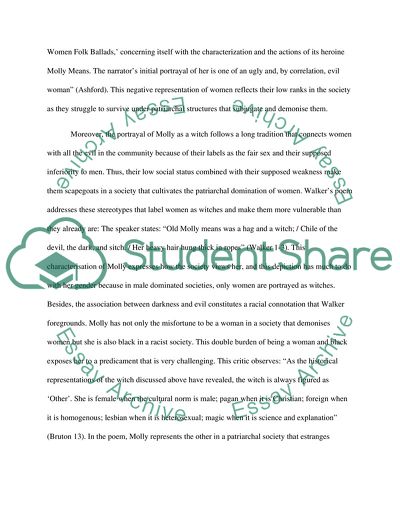Womens Stereotypes in Margaret Walkers Molly Means Essay Example | Topics and Well Written Essays - 1500 words. https://studentshare.org/literature/1825337-molly-means-research-essay
Womens Stereotypes in Margaret Walkers Molly Means Essay Example | Topics and Well Written Essays - 1500 Words. https://studentshare.org/literature/1825337-molly-means-research-essay.


